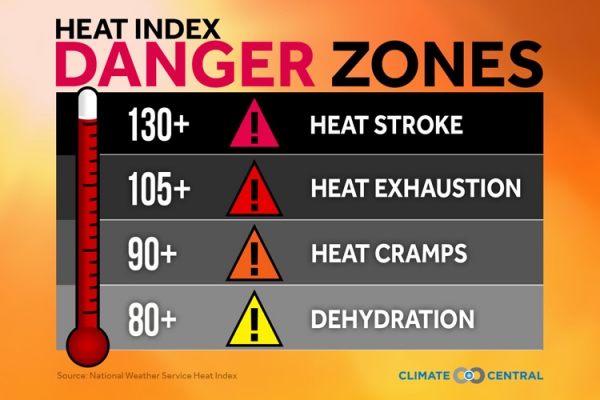If you looked at the heat index during this summer’s sticky heat waves and thought, “It sure feels hotter!,” you may be right.
An analysis by climate scientists at the University of California, Berkeley, finds that the apparent temperature, or heat index, calculated by meteorologists and the National Weather Service (NWS) to indicate how hot it feels — taking into account the humidity — underestimates the perceived temperature for the most sweltering days we’re now experiencing, sometimes by more than 20 degrees Fahrenheit.
The finding has implications for those who suffer through these heat waves, since the heat index is a measure of how the body deals with heat when the humidity is high, and sweating becomes less effective at cooling us down. Sweating and flushing, where blood is diverted to capillaries close to the skin to dissipate heat, plus shedding clothes, are the main ways humans adapt to hot temperatures.
A higher heat index means that the human body is more stressed during these heat waves than public health officials may realize, the researchers say. The NWS currently considers a heat index above 103 to be dangerous, and above 125 to be extremely dangerous.
Read more at University of California - Berkeley
Image: The heat index is a measure of how hot it feels and rises with increasing humidity even as the temperature remains the same. If the index rises above 125-130, heat stroke is considered likely. (Graphic by Climate Central)


